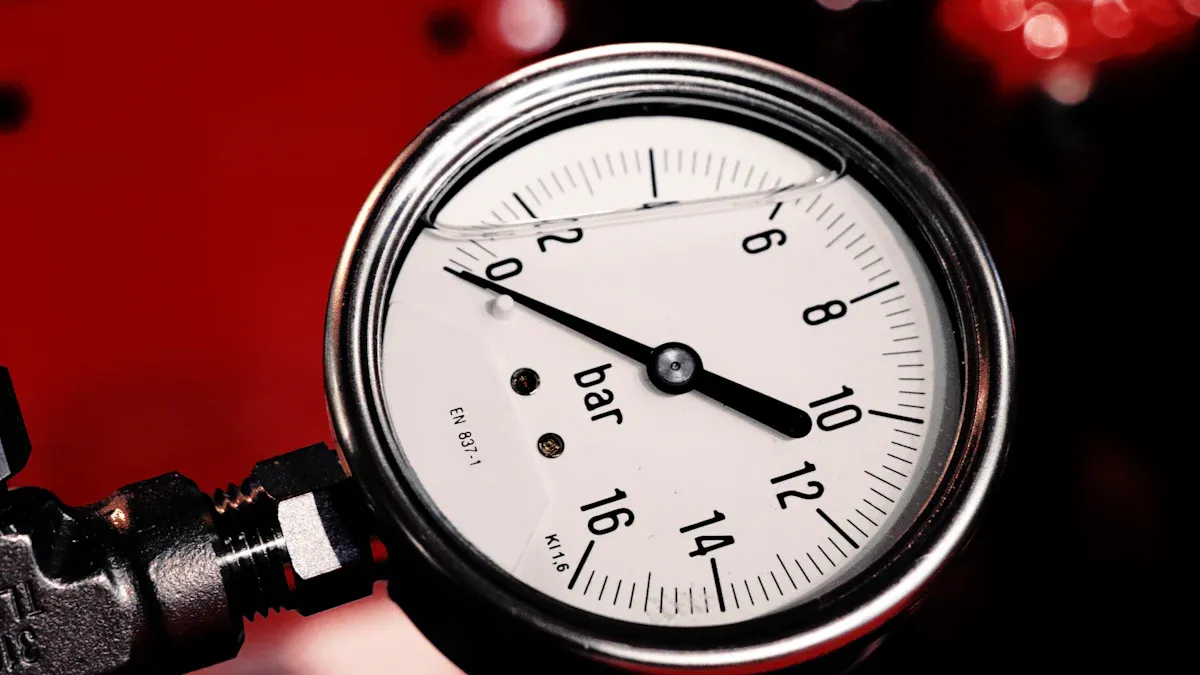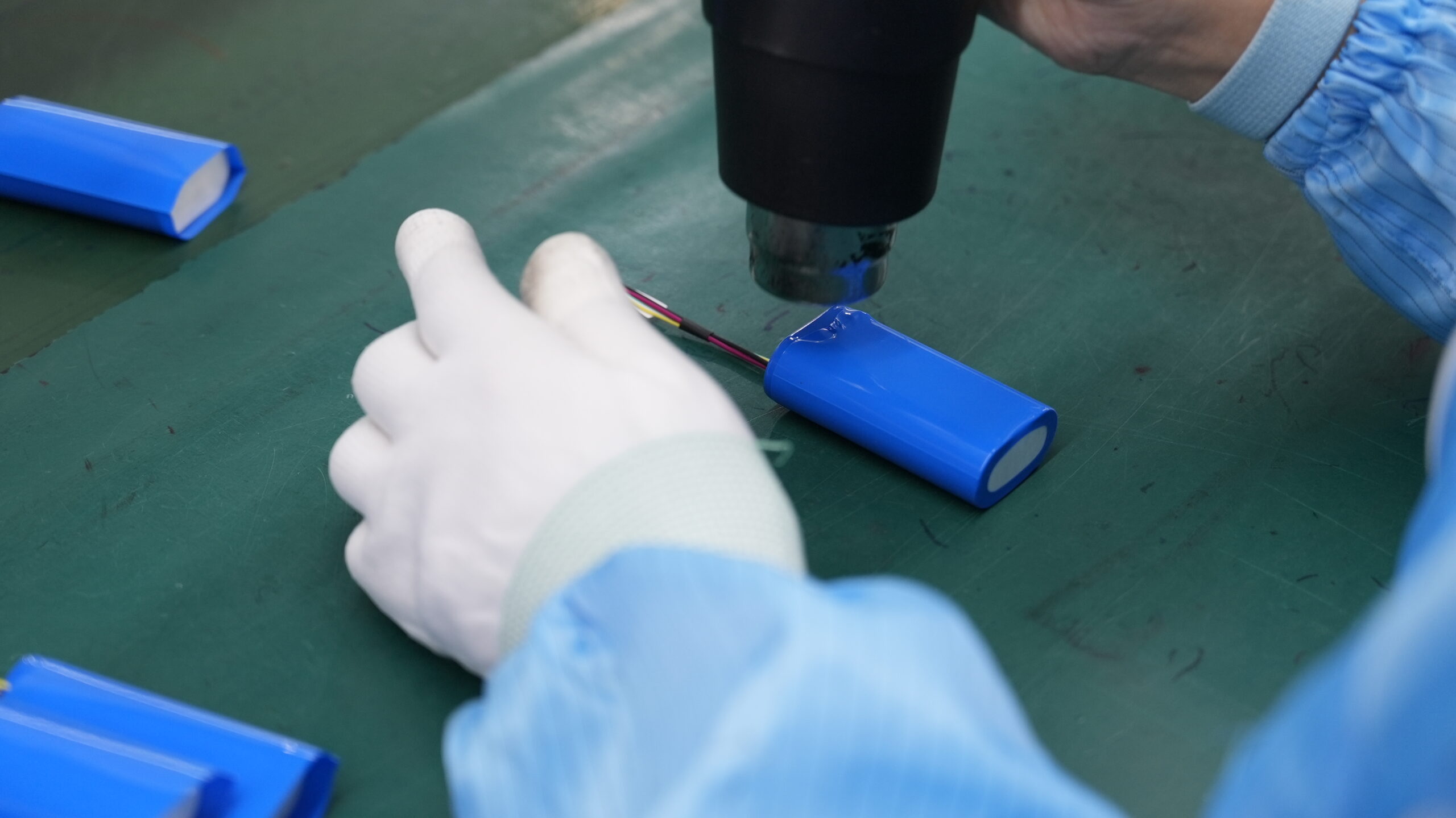
You encounter unique challenges with lithium battery performance when depth and pressure increase in underwater cleaning robots. Depth and pressure drive changes in lithium battery performance, affecting cycle life and safety. Depth and pressure also influence polarization and liquid phase potential. You must optimize lithium battery performance under varying depth and pressure to maintain reliable battery operation.
Key Takeaways
Depth and pressure significantly affect lithium battery performance. Monitor these factors to ensure reliable operation in underwater environments.
Use pressure-resistant casings and advanced sealing methods to protect batteries from water ingress and mechanical stress. Regular inspections can prevent failures.
Implement advanced battery management systems to monitor performance and detect issues early. This helps maintain safety and efficiency during underwater operations.
Part 1: Depth and Pressure Science

1.1 Pressure Effects on Battery
When you deploy underwater cleaning robots, you must consider how pressure increases with depth. As you descend, the external pressure on each battery pack rises significantly. This pressure forces you to adapt the structure of your lithium-ion battery packs to maintain performance and safety. You often see cylindrical cabins with ring reinforcement and trapezoidal stiffeners. These features help your battery withstand the intense pressure found at greater depths.
Physical Change | Description |
|---|---|
Structural Adaptations | Cylindrical cabins with ring reinforcement and trapezoidal stiffeners resist high external pressure. |
Pressure Compensation | Pressure-compensated structures use insulating oil to transmit pressure, protecting the battery. |
Energy Density Impact | Thicker, stronger cabins reduce available space, lowering battery energy density as depth increases. |
Pressure compensation ensures that the internal components of your battery experience equalized pressure, which helps prevent deformation and leakage. However, as you reinforce the battery pack, you sacrifice some capacity because thicker materials take up more space.
1.2 Depth Impact on Lithium-Ion Battery
As you increase depth, you expose your lithium-ion battery to higher pressure, which directly affects capacity, discharge rate, and overall performance. You may notice that the battery’s discharge characteristics change, with polarization becoming more pronounced. This means the voltage drops faster during discharge, reducing usable capacity.
Pressure also alters the liquid phase potential and anode potential inside the battery. These changes can accelerate lithium plating and increase cyclable lithium loss, which shortens cycle life. You must monitor these shifts closely to maintain optimal battery performance in underwater environments. If you operate in the Robotics sector, you know that reliable battery discharge and stable capacity are critical for mission success.
Tip: Always evaluate the pressure rating of your lithium-ion battery pack before deploying it at new depths. This step helps you avoid unexpected performance drops and safety issues.
Part 2: Lithium Battery Performance Factors

2.1 Capacity and Voltage Changes
You face significant challenges with battery capacity and voltage stability when you operate underwater cleaning robots at increasing depths. As pressure rises, you notice a direct impact on the lithium battery’s ability to maintain consistent discharge rates. The external pressure compresses the battery pack, which can alter the internal structure and reduce the available space for active materials. This compression leads to a decrease in energy density and affects the overall performance of the battery.
You observe that the discharge curve shifts under high pressure. The voltage drops more rapidly during operation, which means you get less usable capacity from each cycle. This effect becomes more pronounced as you deploy robots deeper underwater. You must monitor these changes closely to avoid unexpected shutdowns or reduced cleaning efficiency.
Note: You should always test battery packs under simulated pressure conditions before field deployment. This step helps you predict voltage behavior and optimize discharge protocols.
The following table compares the performance characteristics of common lithium battery chemistries used in underwater cleaning robots:
Chemistry | Platform Voltage (V) | Energy Density (Wh/kg) | Cycle Life (cycles) |
|---|---|---|---|
LCO (Lithium Cobalt Oxide) | 3.7 | 150-200 | 500-1,000 |
NMC (Lithium Nickel Manganese Cobalt Oxide) | 3.7 | 200-250 | 1,000-2,000 |
LiFePO4 (Lithium Iron Phosphate) | 3.2 | 90-160 | 2,000-5,000 |
LMO (Lithium Manganese Oxide) | 3.7 | 100-150 | 300-700 |
LTO (Lithium Titanate) | 2.4 | 60-110 | 7,000-20,000 |
Solid-State Battery | 3.7 | 250-400 | 2,000-10,000 |
Lithium Metal Battery | 3.7 | 400-500 | 500-1,000 |
You must select the right chemistry based on your operational depth, required cycle life, and energy density needs. For deep-sea missions, you often prioritize chemistries with higher cycle life and stable voltage under pressure.
2.2 Efficiency and Cycle Life
You encounter efficiency losses in lithium battery packs as you increase operating depth. High-pressure environments accelerate performance degradation, especially at extreme depths. You see that lithium plating and cyclable lithium loss become more severe, which shortens the cycle life of your battery. You must address these issues to maintain reliable discharge and maximize operational uptime.
You can improve efficiency by applying optimum compressive pressure during battery cycling. Research shows that controlled pressure can reduce lithium loss and stabilize discharge rates. You should implement pressure management strategies in your battery design to extend cycle life and enhance overall performance.
You should monitor the following factors to optimize efficiency:
Discharge rate stability under pressure
Lithium loss during cycling
Temperature control to prevent accelerated degradation
Selection of battery chemistry with proven pressure tolerance
You must recognize that lithium-ion batteries experience performance issues in high-pressure underwater settings. This challenge highlights the need for ongoing research to enhance pressure tolerance and ensure reliable operation in deep-sea environments.
Tip: You should schedule regular maintenance and cycle testing for your battery packs. This practice helps you detect efficiency losses early and plan for timely replacements.
You must balance efficiency, cycle life, and safety when designing lithium battery systems for underwater cleaning robots. You should always consider the impact of pressure and depth on discharge characteristics and overall battery performance.
Part 3: Safety Risks
3.1 Leakage and Short Circuit
You face serious safety risks when you operate lithium battery packs in underwater cleaning robots. High external pressure can damage the battery casing and internal components. This damage often leads to compromised seals and microfractures. When seals fail, water can enter the battery enclosure. Both fresh and salt water cause hydrolysis and degrade battery material. Salt water increases the risk of metal corrosion inside the battery pack.
If water collects inside the battery, it can bridge the electrodes. This process creates internal short circuits. You may see localized heating and rapid failure of lithium cells. Electrolyte decomposition and short circuits can happen instantly or develop over time. Internal short circuits from water contamination sometimes cause violent ruptures. Rapid heat and gas generation inside the battery pack can lead to dangerous outcomes.
Common safety risks for lithium battery packs in underwater robots:
Water ingress causing short circuits
Hydrolysis and material degradation
Metal corrosion from salt water
Rapid cell failure due to electrolyte breakdown
Violent ruptures from internal pressure buildup
Note: You should always inspect battery seals and casing integrity before each deployment. Early detection of leaks helps prevent catastrophic failure.
3.2 Thermal Runaway
You must monitor for thermal runaway in lithium battery packs. Elevated temperatures and internal pressure increase the risk of uncontrolled discharge reactions. When battery material heats up, it can trigger a chain reaction. This reaction releases more heat and gas, raising the internal pressure further. If the battery pack cannot vent safely, the pressure may rupture the casing.
Thermal runaway often starts with a short circuit or material failure. You may notice a sudden spike in discharge rate or temperature. The battery pack can release toxic gases and even catch fire if not managed properly. You need robust temperature control and pressure management systems to reduce these risks.
Safety Risk | Cause | Prevention Strategy |
|---|---|---|
Leakage | Seal failure, casing damage | Regular inspection, robust casing |
Short Circuit | Water ingress, material degradation | Advanced sealing, monitoring |
Thermal Runaway | Overheating, uncontrolled discharge | Temperature control, pressure relief |
Tip: You should implement real-time monitoring for temperature and discharge rate. Early intervention prevents escalation and protects your equipment.
Part 4: Engineering Solutions
4.1 Pressure-Resistant Casings
You must address the challenge of high-pressure environments when designing battery packs for underwater cleaning robots. Pressure-resistant casings form the first line of defense against water ingress and mechanical stress. You can achieve robust protection by combining advanced materials, sealing technologies, and thoughtful engineering.
You should select waterproof battery packs with high IP ratings, such as IP67, IP68, or IP69. These ratings indicate strong resistance to water and dust, which is essential for submerged operations.
You benefit from enclosures made of marine-grade, corrosion-resistant materials. These materials withstand harsh underwater conditions and extend battery life.
You can use advanced sealing methods, including laser welding and silicone gaskets. These techniques prevent water from entering the battery pack, even under extreme pressure.
You should consider oil-filled battery designs. The insulating oil fills gaps in the casing, creating a waterproof barrier. This oil also balances pressure and protects the battery core, even if the casing suffers minor damage.
You improve reliability by implementing a triple protection network. This network combines an insulating oil barrier, pressure balance, and corrosion-resistant materials.
Tip: Regularly inspect your battery packs for seal integrity and casing damage. Early detection of wear helps you maintain energy efficiency and prevent costly failures.
You can further enhance protection by using hermetic seals. These seals block moisture and maintain battery integrity at depth. Proper handling and storage also play a role. Store your batteries in dry locations and inspect them before each deployment. High IP ratings and certified water-resistant devices provide additional assurance.
Design Feature | Benefit |
|---|---|
Marine-grade enclosure | Corrosion resistance, longer battery life |
Laser welding & silicone gaskets | Superior sealing, prevents water ingress |
Oil-filled design | Enhanced waterproofing, pressure balance |
Hermetic seals | Blocks moisture, maintains integrity |
High IP rating | Reliable operation in submerged conditions |
You should choose battery chemistries that offer stable energy output and long cycle performance. For example, LiFePO4 batteries deliver 2,000 to 5,000 cycles, excellent thermal stability, and high discharge efficiency. Their robust design supports high discharge currents, which is critical for marine electronics. Although LiFePO4 batteries have lower energy density than NMC or LCO, their reliability and safety make them ideal for underwater use. A longer lifespan reduces replacement frequency, lowering your total cost of ownership.
4.2 Battery Management Systems
You must implement advanced battery management systems (BMS) to ensure safe and efficient operation in underwater environments. A BMS monitors and controls every aspect of battery performance, including charge, discharge, temperature, and pressure.
You should select a BMS that provides real-time monitoring of voltage, current, and temperature. This monitoring helps you detect anomalies early and prevent thermal runaway.
You benefit from BMS features that balance cells during charge and discharge cycles. Balanced cells improve capacity retention and extend cycle performance.
You can use BMS solutions that include pressure sensors. These sensors alert you to abnormal pressure changes, allowing you to take corrective action before damage occurs.
You should integrate BMS with remote diagnostics. Remote access enables you to monitor battery health and energy efficiency from a central location.
Note: For more information on advanced battery management systems, visit our BMS solutions page.
You can further improve cycle performance by applying controlled pressure during charge and discharge cycles. Research shows that optimum compressive pressure reduces lithium loss and stabilizes discharge rates. This approach enhances capacity retention and extends battery life, especially in deep-sea applications.
You should always use batteries with safety certifications and proven cycle performance. Regular maintenance and cycle testing help you identify efficiency losses and plan timely replacements. When you need a custom battery solution for your underwater cleaning robot, contact our engineering team for expert consultation.
Callout: Sustainable engineering solutions, such as using non-toxic materials and optimizing energy efficiency, support long-term reliability and environmental responsibility. For more on sustainable battery design, see our sustainability initiatives.
You must balance energy density, cycle performance, and safety when selecting and maintaining battery packs for underwater cleaning robots. By combining pressure-resistant casings, advanced sealing, and intelligent BMS, you ensure reliable operation and maximize the value of your investment.
You see how depth and pressure challenge lithium battery pack performance in underwater cleaning robots. You need robust engineering and best practices to ensure safety and reliability. For tailored battery solutions, contact our engineering team. Ongoing research will drive innovation in underwater battery design.
FAQ
What is the best way to perform battery testing for underwater lithium battery packs?
You should use pressure chambers and simulate underwater conditions during battery testing. Large Power offers custom consultation for advanced battery testing solutions.
How does electrochemical performance change during underwater testing?
You observe changes in discharge rate and voltage stability. High pressure affects electrochemical reactions, so you must monitor these parameters closely during testing to ensure reliable operation.
Why should you choose Large Power for lithium battery pack solutions?
You gain access to expert engineering, robust battery testing protocols, and tailored battery solutions for underwater applications. Large Power supports your business with reliable products and ongoing technical support.






